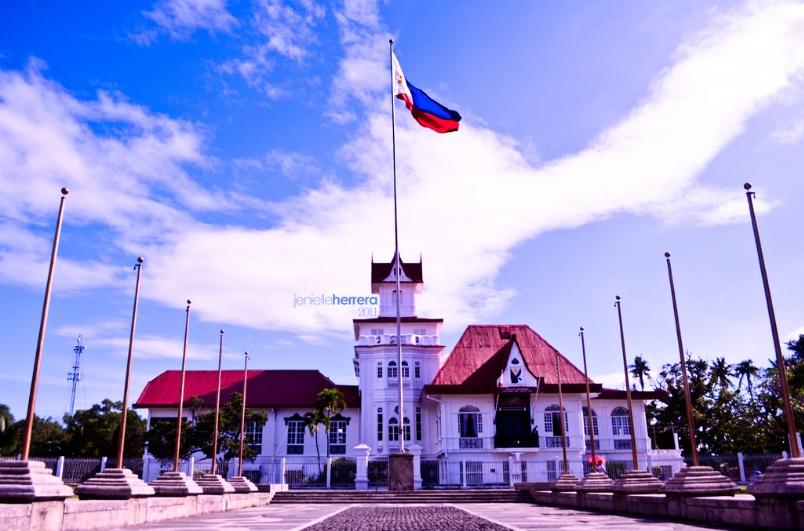
This National Shrine is situated in Kawit, Cavite. It is the ancestral home of the first Philippine President Emilio Aguinaldo. In this place was where the Philippine Independence Day, also known as “Araw ng Kalayaan,” was declared on June 12, 1898. To this day, all Filipinos annually commemorate the Independence Day. Every year, the Philippine flag is raised here by the top government officer as a sign of recognizing and celebrating our country's first taste of freedom.
During the proclamation of the Independence, the Philippine flag, which is personally designed by Aguinaldo, was formally presented to the people and it was also the day that the Philippine National Anthem was first played with marching band.
Emilio Agunaldo's House is really a mansion. It has a floor area over 14,000 square feet. The building is divided into three areas – the main house on the west side of the building, the tower located in the center and the family building on the east. This house was originally designed by Aguinaldo. It is made up of wood and thatch. He had put secret ways and hiding areas for documents and weapons.
Since the house of Aguinaldo holds an important place to the Filipinos' hearts, he decided to donate his home to the Philippine government on June 12, 1963. He wanted the people to continue the spirit of the Philippine Revolution of 1896 that ended to the Spanish colonization of this country.
After Aguinaldo died on Febuary 6, 1964 at the age of 94 in Veterans Memorial Hospital in Quezon City, the govement announced his house as a National Shrine on June 18 of the same year through Republic Act of 4039 approved by President Diosdado Macapagal.
Today, the house is now a huge museum of Aguinaldo’s memorabilia and other historical relics. The house is full of decorations and antique furnitures. Many of the decorations have a great significance to to our country's history, like flags and different national symbols. The land area of the mansion is now expanded into an Aguinaldo Park. It was created in time for the celebration of the Philippine Independence Centennial in 1988. Before, the front of the mansion was a busy street but now, it is renovated into a long walkway and two long pools matching the primitive and artistic beauty of the house. The park is bound by a bronze equestrian statue of Aguinaldo placed on a marble platform. At the back of the house, there is a green garden surrounded by a stream on the east and a fish pond on the south. In the middle of the garden, there is a marble tomb where Aguinaldo is buried. Outside, a Packared limousine is displayed, the personal car of Aguinaldo which was restored last November 2009.
The Aguinaldo Shrine and Museum is sustained and preserved by the National Historical Institute of the Philippines which is open every Tuesday to Sunday, from 8:00 AM to 4:00 PM.
This museum keeps our country's past alive. Most of the people who go here are students who want to learn outside the usual textbook style of education. True enough, visitors will be taken back to that time when Filipino revolutionaries struggled and fought for their freedom and the independence of the whole country. They sacrificed their lives so that we can have a country to call our own. The Aguinaldo Shrine and Museum is a great place to look back in gratitude and appreciate the deeds that our heroes have done for us.
How to get there
From Manila, you can take buses going to Cavite City. In Kawit, the shrine is accessible within the main Highway going to Cavite City with approximately 1 – 2 hours travel time.










